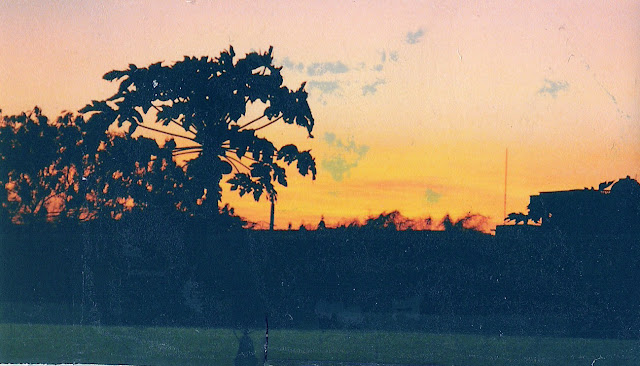Education specialist
HOPE Worldwide
Hargeisa
February – August 2002
Background
During 2002, I was part of an International team of aid and
relief workers who worked for an NGO, HOPE Worldwide, in Hargeisa, Somali-land.
We were involved with educational and health care projects and partnered with
other NGO's such as UNICEF, UNDP, and WHO.
Life in Somali-land was a lot less challenging than I
imagined. One sees the news on CNN and BBC on countries like these of 'mortars
flying around and burning buildings', which creates a certain expectation and
anticipation. I felt reasonably safe and our living environment even allowed us
certain luxuries.
We stayed in a compound which were guarded 24/7 by guards.
We had a land cruiser with a Somali driver that drove us everywhere and acted
as our translator. We did venture out on foot to walk to the nearby orphanage
or take a quick jog, but it usually attracted a lot of unwanted
attention.
Abdi Hakim, our driver took us out into the desert area on
the outskirts of Hargeisa to do undisturbed exercising and jogging and some
welcome privacy out in nature.
The HOPE team shared a house. We all had our own bedrooms,
but bathrooms had to be shared. Municipal provided electricity in Hargeisa was
limited to 2 hours per day, so we had a generator as a back-up, but had to use
it sparsely. We had an Ethiopian cook, who cooked three highly enriched
carbo-hydrated meals every day, so needless to say I picked up a lot of weight.
We were invited to many functions by our partners and
friends at restaurants. The very colonial thing to do was to have a sunset
picnic on top of Hargeisa hill on the outskirts of Hargeisa.
We played football with some of the Somali's at home during
siesta times, as everything in Hargeisa closes between 12 pm and 4 pm, we were
forced to take a siesta. The temperature during siesta was also very high, so
it was a good idea not to be out and about in very conservative clothing. We
did not have air conditioning in the house, which was challenging at
times.
Mosquitoes were a big problem and we had to sleep under
mosquito nets. A good place to hang out was on the roof of our house and at
times we even took our sleeping bags and slept there. We had a great view of
the neighborhood from the roof, which the high walls around our compound
blocked us from.
The locals always treated us with respect and friendliness.
The expat community consisting of other NGO workers formed a close-knit
community and we received friendship, outreach, and support on a regular basis.
One’s experiences may almost be compared to the romanticized colonial experiences
of the expatriates as portrayed in the film "Out of Africa". Very few
people would ever get the opportunity to experience Somalia.
 |
| Goat on a Hargeisa downtown street sidewalk |
About Hargeisa
Hargeisa (Somali: Hargeysa) is a city situated in the
Woqooyi Galbeed region of the self-declared but internationally unrecognized
Republic of Somali-land in the Horn of Africa. It is the capital and
largest city of Somali-land.
The city succeeded Berbera as the capital of the British
Somali-land protectorate in 1941. In 1960, the protectorate gained independence
and united as scheduled days later with the Trust Territory of Somali-land (the
former Italian Somali-land) to form the Somali Republic (Somalia) on July
1.
Hargeisa is situated in a valley in the Galgodon (Ogo)
highlands and sits at an elevation of 1,334 m (Wikipedia).
|
|
The Hargeisa War Memorial
|
About Somaliland
Somali-land, officially the Republic of Somali-land
(Somali: Jamhuuriyadda Somaliland), is a self-declared state, internationally
recognized as an autonomous region of Somalia.
The government of the de facto state of Somali-land regards
itself as the successor state to the former British Somali-land protectorate,
which as the State of Somali-land united as scheduled on 1 July 1960 with the
Trust Territory of Somali-land (the former Italian Somali-land) to form the
Somali Republic.
Somali-land lies in north-western Somalia, on the southern
coast of the Gulf of Aden, and is bordered by Somalia to the east, Djibouti to
the northwest, and Ethiopia to the south and west.
Its claimed territory has an area of 137,600 square
kilometres, with approximately 4 million residents. The capital and the largest
city is Hargeisa, with a population of around 1,200,000 residents.
History
In 1988, the Siad Barre regime launched a crackdown against
the Hargeisa-based Somali National Movement (SNM) and other militant groups,
which were among the events that led to the Somali Civil War.
The conflict left the country's economic and military
infrastructure severely damaged. Following the collapse of Barre's government
in early 1991, local authorities, led by the SNM, unilaterally declared
independence from Somalia on 18 May of the same year and reinstated the borders
of the former short-lived independent State of Somali-land.
Current status
Since then, the territory has been governed by
democratically elected governments that seek international recognition as the
Government of the Republic of Somali-land. The central government maintains
informal ties with some foreign governments, who have sent delegations to
Hargeisa. Ethiopia also maintains a trade office in the region.
However, Somaliland's self-proclaimed independence remains
unrecognized by any country or international organization. It is a member of
the Unrepresented Nations and Peoples Organization, an advocacy group whose
members consist of indigenous peoples, minorities, and unrecognized or occupied
territories (Wikipedia).
 |
| View of Hargeisa from the roof of the Maternity hospital |






























































